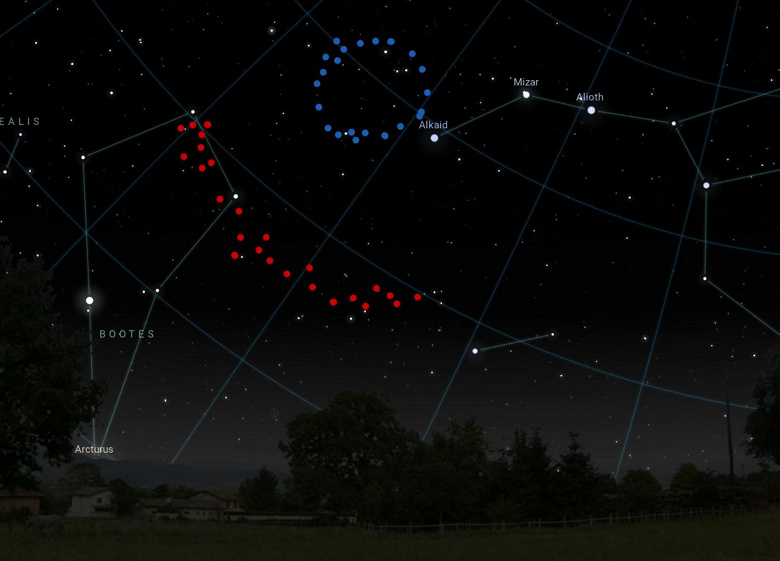Giant Arc and Great Ring Challenge Conventional Cosmology
According to the Standard Model of Cosmology, the early Universe should be a fairly homogeneous place. However, in 2021, astronomers discovered a large grouping of galaxies forming a giant arc 3.3 billion light years long. Now another large-scale formation has appeared – a huge ring of galaxies, called the Great Ring. Together, the giant arc and the Great Ring pose a challenge to the Standard Model and could send cosmologists into the early stages.
«The Great Ring and the Giant Arc are equidistant from us, near the constellation Bootes, meaning they existed at the same time when the Universe was half its age. They are also in the same area of the sky, only 12 degrees apart. The discovery of two extremely large structures so close to each other raises the possibility that together they form an even more amazing cosmological system», — says Alexia Lopez, who discovered both formations with her supervisor Roger Close and colleague Gerard Williger.
The Great Ring and Giant Arc are made up of galaxies that are so faint and faint that they are not normally visible. However, distant quasars (active black holes at the hearts of galaxies) transmit light through dim galaxies, where some of the light is absorbed by matter.
Specifically, Lopez and her colleagues were looking for evidence that dim galaxies block the magnesium ion, Mg-II. «We found it in data from the Sloan Digital Sky Survey, which gave the position and distance of the unseen galaxies. This made it possible to construct a map of galaxies in three dimensions and identify the Giant Arc and the Great Ring, located at a distance of 9.2 billion light years», — says Lopez.
«The large ring has a significance of 5.2 sigma. This exceeds the 5 sigma threshold, — says Lopez, explaining the astronomical level of significance required to confirm the discovery.
One possible explanation for such large structures is called Baryonic Acoustic Oscillation (BAO). She suggests that waves formed by gravitational interactions in the early Universe could create «bubbles» matter on large scales. However, the BAO usually produces spherical structures, while the Great Ring is two-dimensional.
At the annual conference of the American Astronomical Society on January 10, 2024, Lopez mentioned two possible alternative explanations.
The first explanation is related to the existence of cosmic strings, proposed within the framework of string theory in the 1970s. «Cosmic strings could have been created in the early Universe and left their mark on the structure of matter», — says Lopez.
The Great Ring and the Giant Arc can also be explained by another model of cosmology, such as conformal cyclic cosmology (CCC), proposed by physicist Roger Penrose. «In CCC, the Universe goes through endless Big Bang cycles. It expands endlessly, and all matter decays until the difference between the empty expanded Universe and the Big Bang singularity is a matter of scale, — explains Lopez.
Further study of these structures and their significance in the context of the development of the Universe pose a challenge for cosmology. These discoveries bring us closer to understanding the origin and evolution of the Universe, and may also lead to a revision of existing theories.

